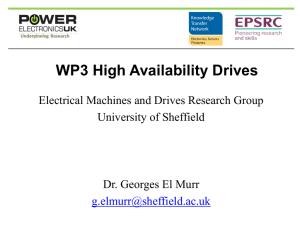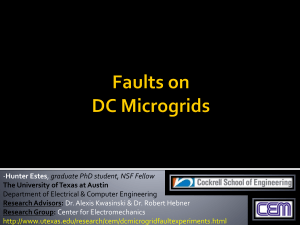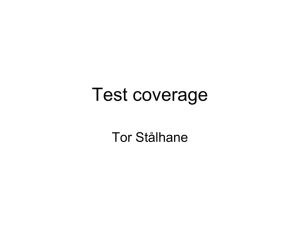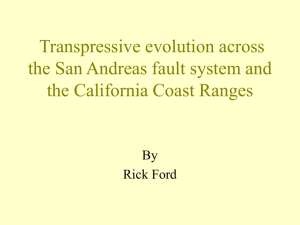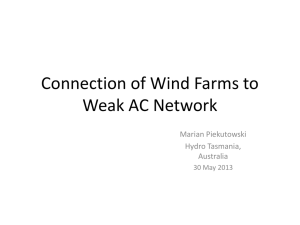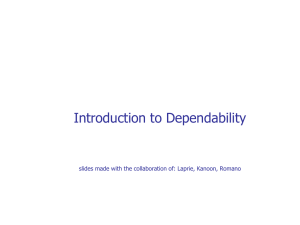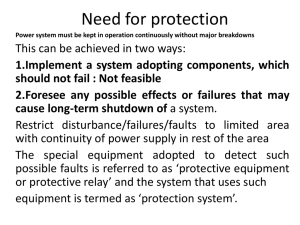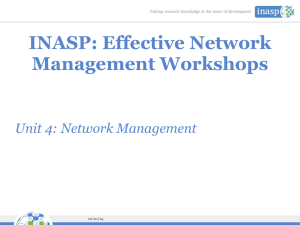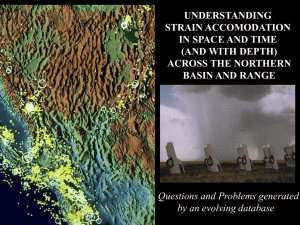Fault-tolerant Control
advertisement
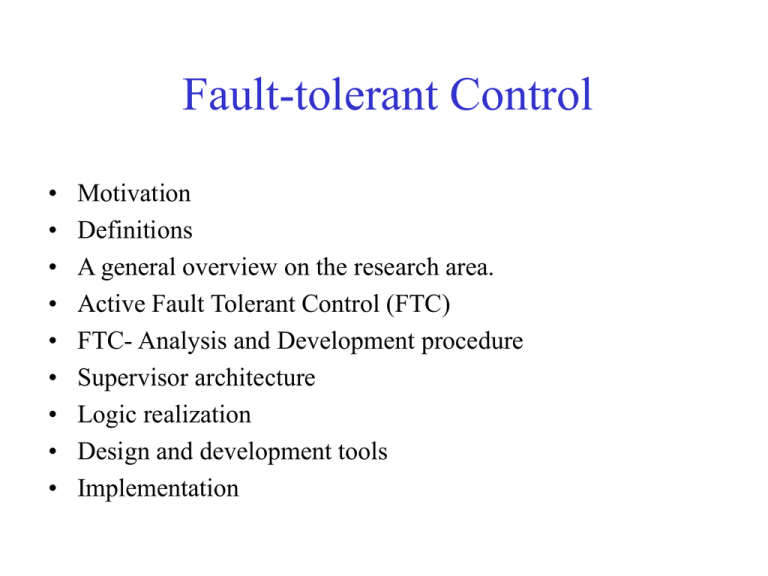
Fault-tolerant Control • • • • • • • • • Motivation Definitions A general overview on the research area. Active Fault Tolerant Control (FTC) FTC- Analysis and Development procedure Supervisor architecture Logic realization Design and development tools Implementation Fault Tolerant Control • Motivation: – Demand for higher autonomy and reliability requires considering all possible situations to guarantee correct and consistent operation • Purpose: – Using a logically sound stepwise guideline to achieve • • • • Complete coverage of possible single faults. Supportive software tools. Avoiding unnecessary plant modelling. Automatic code generation. • Initial Prerequisites: – Initial system concept is established. – Systems requirements are specified: (operating modes and functions, required performance, environmental, safety, or regularity requirements) Approaches to achieve FTC Fault-tolerant Control Passive Robust control Active FDI or SID + reconfiguration Projection-based or switching on-line redesign or adaption FTC development procedure - I Analysis 1 Component failure modes 2 Fault modelling Fault propagation analysis FPA data base 3 Desired effects to be handled 4 Functional structure model List of possible effects Causal relation analysis Faults/effects to be detected Severity assessment Location for reconfiguration 5 Possible detectable faults + sensor fusion possibilities Structural analysis ARRs 6 Reconfiguration Remedial action selection condition Remedial actions Commands and monitoring Detector design Supervisor design 7 9 Effector design 8 Design FTC Development procedure - II Fault Modelling Failure Mode and Effect Analysis -FMEA FMEA scheme for the Wheel system FMEA – Other examples FMEA scheme for the GPS Fault assessment - I • Severity Occurrence Index (SO) – Severity Potential harm that fault effect inflicts the system; Severity is quantified by severity scale from 1 to 10. – Occurrence; the frequency of fault occurrence during expected operational time interval; is quantified by by scale from 1 (unlikely to occure) to 10 (persistent failure) – SO index: SO = Severity . Occurrence Fault Assessment II Severity and Occurrence analysis of the Wheel system Fault Assessment III Evaluation guidelines and identification of severe failures that need to be handled Fault Assessment – List of faults Periority assignment to different fault types Fault Assessment – Causality Analysis Identifying possible causes of failures by backward search through the Wheel system FMEA analysis and Structural Analysis Knowledge representation Component's abnormal function Knowledge formulation and manipulation FMECA (Hazard analysis) Faults to be handled Remedial action selection & Components Component's normal function Abstraction Monitorable Parts Structural analysis Implementation & analysis Detailed FDI design Nonmonitorable Parts Decision & design Chosen approaches to detailed design (algorithms) Fault-tolerant Control Passive Robust control Active FDI or SID + reconfiguration Projection-based or switching on-line redesign or adaption Supervisory Control - Definitions • To supervise: To oversee and guide the work or activities of a group of people/system, etc. • Supervision: – Monitoring a physical system and taking appropriate actions to maintain the operation in the case of faults – The ability to monitor whether control objectives are met. If not, obtain/calculate a revised control objective and a new control structure and parameters that make a faulty closed-loop system meet the new modified objectives. Supervision should take effect if faults occur and it is not possible to meet the original control objective within the fault-tolerant scheme. Supervisor Architecture Plant wide control / operator Command & set points Interface State info. & alarms Supervisor/decision logic Decision Action Set points Detections Effectors Filtering & validity check Detectors Control algorithms Data/info. Actuators Sensors Control level Logic realization •Language approach - a component based method •State-event machines Redundancy possibilities Responsibility/task Control systems hierarchy Int. cond. (sub)systems Int. cond. Actuators Ext. cond. Int. cond. Controllers Ext. cond. Sensors Ext. cond. Evolving/developing Hardware redundancy Performing action Hardware & software redundancy Information manipulation and decision taking Information acquisition Int. cond. Figure- Control system hierarchy consists of four principle components Ext. cond. Constructing the logic - Language approach fB Fig.1 IB21 IB22 IB23 fA IA31 IA32 IA33 . C Controller IA1 IA2 IA3 Component A A P Actuator Plant . (a) with loop C Controller P Actuator Plant S (b) without loop Sensor OB OP OP=HCP.HCA.HCC.HCS. HCP.HCA.HCC.HCS. .................... =[HCP.HCA.HCC.HCS] OP OP = HCP.HCA.HCC.HCS.. Sensor A Component B OA S Fig.2 IB3 IB2 IB1 1 = [HCP.HCA.HCC.HCS] Constructing the logic - State-event machines Re-configurable control systems hierarchy (sub)system (sub)system1 2 Actuator Actuator1 2 Controller 1 Controller Controller2 3 Sensor setset1 2 Sensor Sensor set 3 FSM representation Logic design - Knowledge aquisition External conditions (environment) Faults Affected goals Reconfiguration possibilities Logic design Affected subsystems Upper level/operator messages Design Tools and implementaion • Tools – Statecharts • Hierarchy/depth • Concurrency • Comunication – Stateflow (Matlab) – Beologic (B&O) • Consistency/correctness – Beologic • Implementation – IF-THEN rules – Object Oriented structure Exercise and next lecture • Exercise • Objectives: » System analysis and knowledge acquisition about faults and their effect on the system operation. » Consider reconfiguration possibilities • Next lecture • Structural analysis approach: – Monitorable vs. non-monitoravble part of the systems
